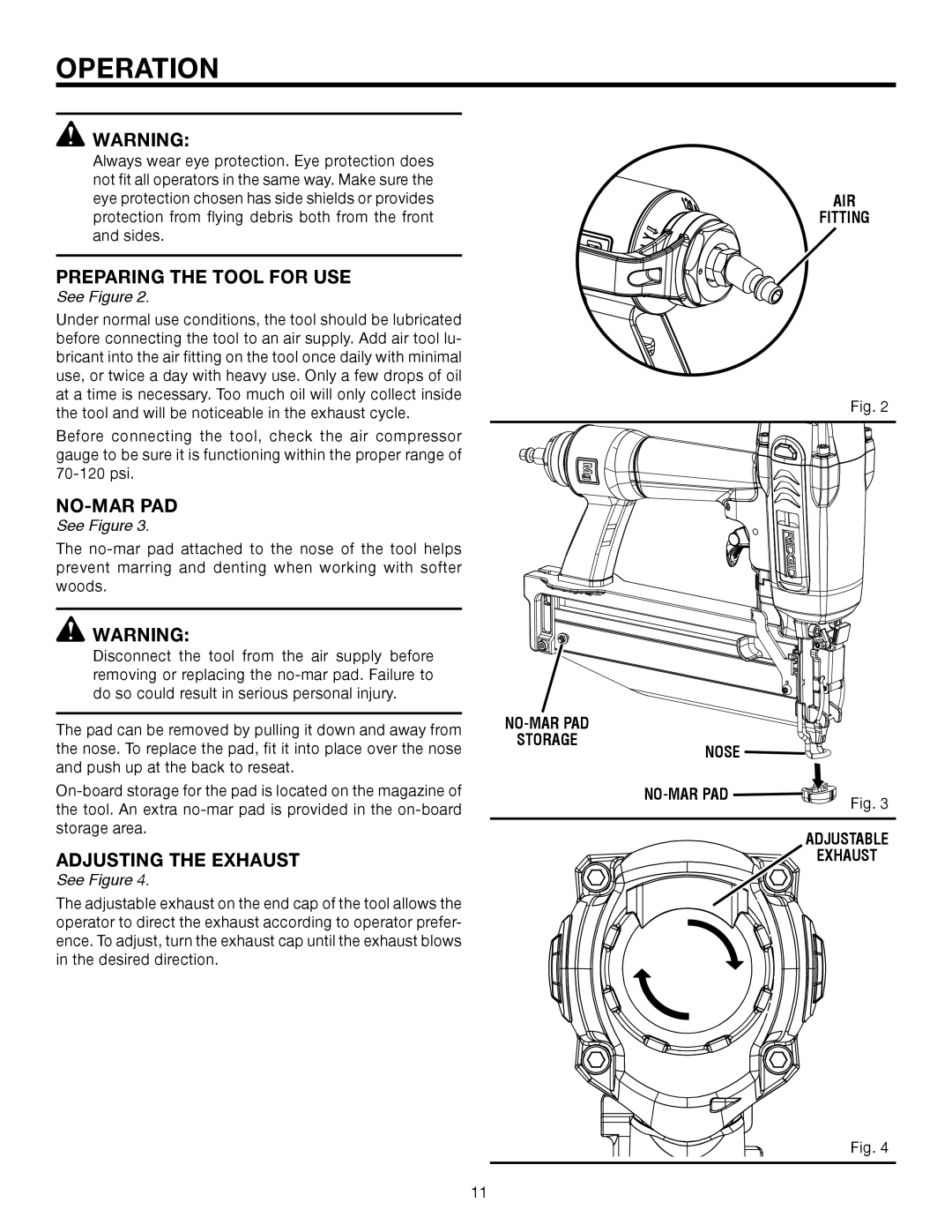
OPERATION
![]() WARNING:
WARNING:
Always wear eye protection. Eye protection does not fit all operators in the same way. Make sure the eye protection chosen has side shields or provides protection from flying debris both from the front and sides.
PREPARING THE TOOL FOR USE
See Figure 2.
Under normal use conditions, the tool should be lubricated before connecting the tool to an air supply. Add air tool lu- bricant into the air fitting on the tool once daily with minimal use, or twice a day with heavy use. Only a few drops of oil at a time is necessary. Too much oil will only collect inside the tool and will be noticeable in the exhaust cycle.
Before connecting the tool, check the air compressor gauge to be sure it is functioning within the proper range of
NO-MAR PAD
See Figure 3.
The
![]() WARNING:
WARNING:
Disconnect the tool from the air supply before removing or replacing the
The pad can be removed by pulling it down and away from the nose. To replace the pad, fit it into place over the nose and push up at the back to reseat.
NO-MAR PAD
STORAGE
AIR
FITTING
Fig. 2
NOSE 




ADJUSTING THE EXHAUST
See Figure 4.
The adjustable exhaust on the end cap of the tool allows the operator to direct the exhaust according to operator prefer- ence. To adjust, turn the exhaust cap until the exhaust blows in the desired direction.
![]()
![]()
![]()
![]()
![]()
![]()
![]()
![]() Fig. 3
Fig. 3
ADJUSTABLE
EXHAUST
Fig. 4
11
